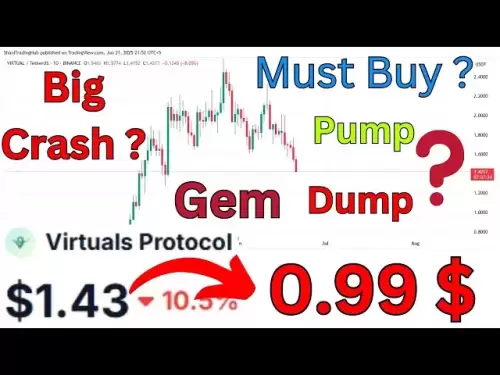-
 Bitcoin
Bitcoin $103,456.1111
0.49% -
 Ethereum
Ethereum $2,414.9631
0.02% -
 Tether USDt
Tether USDt $1.0006
0.05% -
 XRP
XRP $2.1083
0.24% -
 BNB
BNB $634.8760
-0.76% -
 Solana
Solana $139.8437
1.94% -
 USDC
USDC $0.9998
-0.01% -
 TRON
TRON $0.2737
0.97% -
 Dogecoin
Dogecoin $0.1602
0.20% -
 Cardano
Cardano $0.5737
1.08% -
 Hyperliquid
Hyperliquid $32.9779
-2.54% -
 Bitcoin Cash
Bitcoin Cash $474.8886
-1.80% -
 Sui
Sui $2.6272
-1.99% -
 Chainlink
Chainlink $12.4878
0.14% -
 UNUS SED LEO
UNUS SED LEO $8.9234
0.35% -
 Stellar
Stellar $0.2411
-0.18% -
 Avalanche
Avalanche $17.0274
-0.70% -
 Toncoin
Toncoin $2.8936
-1.11% -
 Shiba Inu
Shiba Inu $0.0...01112
-0.58% -
 Litecoin
Litecoin $82.6982
1.33% -
 Hedera
Hedera $0.1423
-0.05% -
 Monero
Monero $314.8455
3.26% -
 Ethena USDe
Ethena USDe $1.0006
0.01% -
 Polkadot
Polkadot $3.4043
1.14% -
 Dai
Dai $0.9999
0.01% -
 Bitget Token
Bitget Token $4.2848
-0.13% -
 Uniswap
Uniswap $6.8748
-5.45% -
 Pepe
Pepe $0.0...09661
0.52% -
 Pi
Pi $0.5359
1.19% -
 Aave
Aave $242.9168
-1.03%
What is the use of MKR coin? The concept, value and practical application of MKR coin
MKR's governance role in the Maker Protocol empowers token holders to influence policies, ensuring the stability and functionality of the protocol and its stablecoin, DAI.
Oct 10, 2024 at 11:42 am
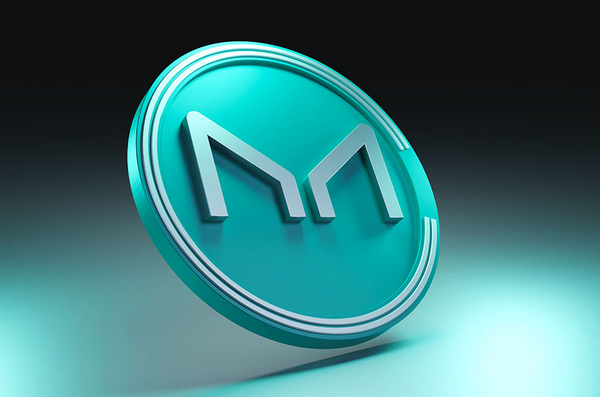
What is the Use of MKR Coin? The Concept, Value, and Practical Application
1. Concept
MakerCoin (MKR) is the governance token of the Maker Protocol, a decentralized lending platform built on the Ethereum blockchain. MKR holders have the ability to influence the protocol's policies and technical parameters through voting on proposed changes.
2. Value
MKR's value is derived from its role in stabilizing the Maker Protocol's stablecoin, DAI. When the price of DAI deviates from its target value of $1, MKR is automatically sold or issued to restore its peg. This mechanism creates a demand for MKR, as it is essential for the proper functioning of the Maker Protocol.
3. Practical Applications
MKR has several practical applications within the Maker Protocol, including:
- Governance: MKR holders can participate in the Maker Protocol governance process by submitting and voting on change proposals.
- Stability: MKR is used to absorb losses incurred by the Maker Protocol during market downturns.
- Liquidity: MKR serves as a liquid asset that can be used to provide liquidity to the Dai Savings Rate (DSR) and other Maker Protocol products.
- Collateral: MKR can be used as collateral to borrow DAI, allowing users to access liquidity without selling their other assets.
4. Enhanced Functionality
In addition to its core functionalities, MKR has also been expanded to include other applications, such as:
- Metagovernance: MKR holders can delegate their votes to other governance participants, allowing for more efficient decision-making.
- Collateral Voting: MKR holders can vote on which assets can be accepted as collateral for borrowing DAI.
- DAO Formation: MKR can be used to vote on the creation of decentralized autonomous organizations (DAOs) within the Maker Protocol.
5. Conclusion
MKR coin is an essential component of the Maker Protocol, playing a crucial role in maintaining the stability and liquidity of the Dai stablecoin. Its governance and utility features enable MKR holders to actively participate in the protocol's decision-making and contribute to its long-term success.
Disclaimer:info@kdj.com
The information provided is not trading advice. kdj.com does not assume any responsibility for any investments made based on the information provided in this article. Cryptocurrencies are highly volatile and it is highly recommended that you invest with caution after thorough research!
If you believe that the content used on this website infringes your copyright, please contact us immediately (info@kdj.com) and we will delete it promptly.
- Ruvi AI: The Audited Token Poised to Outshine Shiba Inu
- 2025-06-22 10:25:12
- Dypians, DeFi, and Sei Network: A Deep Dive into the Latest Trends
- 2025-06-22 10:25:12
- Hacken Security Breach Highlights Risks Across Ethereum and BSC
- 2025-06-22 08:25:12
- SHIB Price, Forecasts, Timelines: Will Shiba Inu Ever Reach the 'One-Cent Dream'?
- 2025-06-22 08:25:12
- Avalanche vs. Ruvi AI: Why Smart Money's on This Audited Token
- 2025-06-22 08:45:12
- Bitcoin Demand on Pause: What's Next for the Crypto King?
- 2025-06-22 08:45:12
Related knowledge
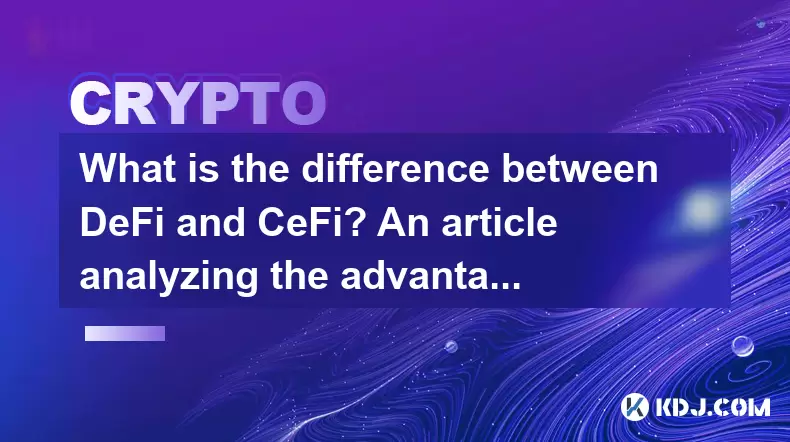
What is the difference between DeFi and CeFi? An article analyzing the advantages and disadvantages of both
Jun 13,2025 at 03:57am
Understanding the Foundations of DeFi and CeFiTo fully grasp the difference between DeFi (Decentralized Finance) and CeFi (Centralized Finance), it’s essential to understand their foundational structures. DeFi operates on blockchain technology, primarily using smart contracts to execute financial services without intermediaries. In contrast, CeFi platfo...
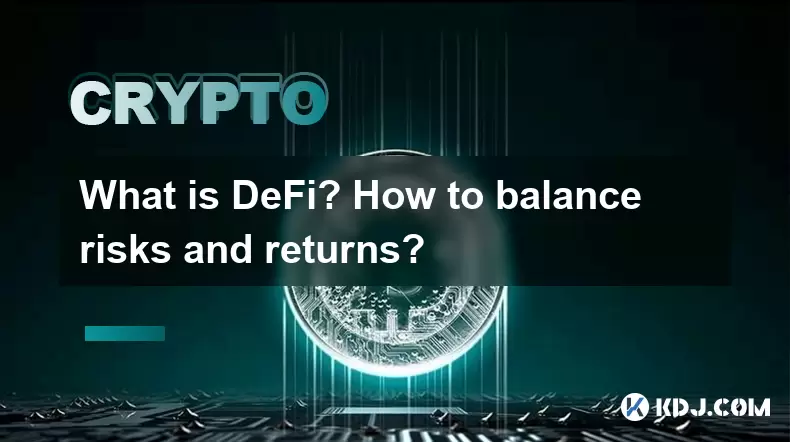
What is DeFi? How to balance risks and returns?
May 31,2025 at 12:22pm
What is DeFi? How to Balance Risks and Returns? Decentralized Finance, commonly known as DeFi, represents a revolutionary shift in the financial ecosystem, leveraging blockchain technology to create an open, permissionless, and transparent financial service network. Unlike traditional finance, which relies on centralized institutions like banks, DeFi op...
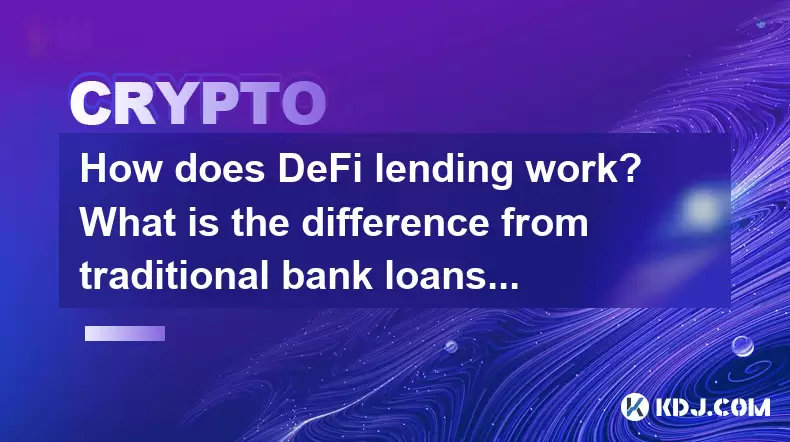
How does DeFi lending work? What is the difference from traditional bank loans?
May 29,2025 at 05:36pm
Introduction to DeFi LendingDeFi lending, or decentralized finance lending, represents a revolutionary shift in the way borrowing and lending are conducted. Unlike traditional bank loans, DeFi lending operates on blockchain technology, offering a decentralized, transparent, and often more accessible approach to finance. This article will explore the mec...
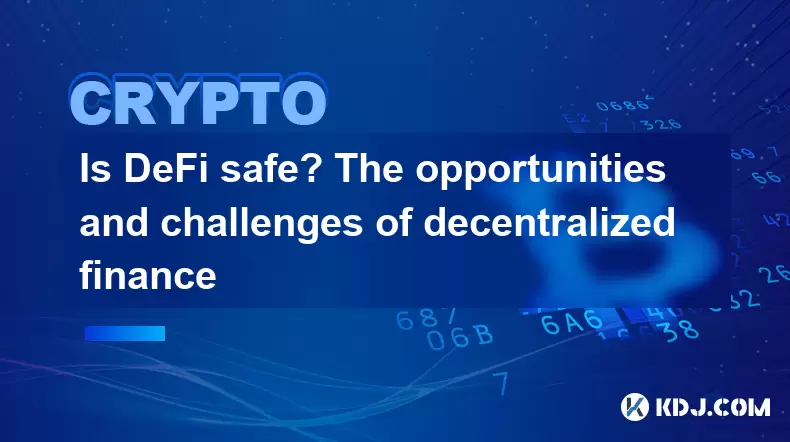
Is DeFi safe? The opportunities and challenges of decentralized finance
May 27,2025 at 02:28pm
Decentralized Finance, commonly known as DeFi, has revolutionized the financial landscape by offering a range of financial services without the need for traditional intermediaries like banks. As with any innovative technology, the question of safety is paramount. This article delves into the opportunities and challenges that come with DeFi, providing a ...
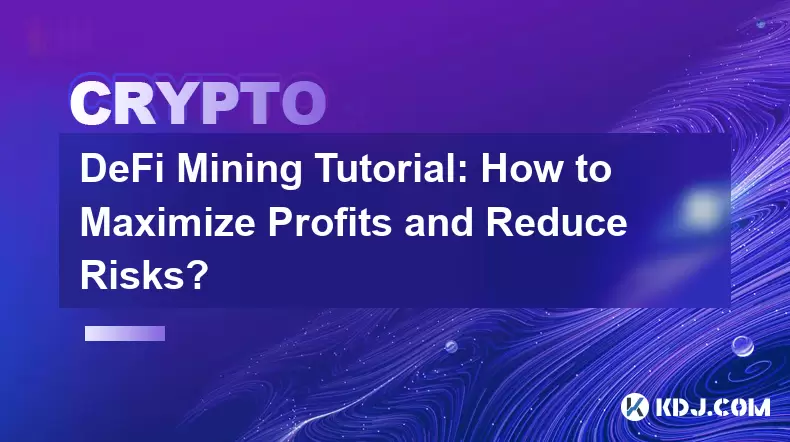
DeFi Mining Tutorial: How to Maximize Profits and Reduce Risks?
May 27,2025 at 07:42am
DeFi, or Decentralized Finance, has opened up a new world of opportunities for crypto enthusiasts looking to maximize their profits through various mining strategies. However, with great potential comes significant risk. This tutorial aims to guide you through the process of engaging in DeFi mining while focusing on maximizing profits and reducing risks...
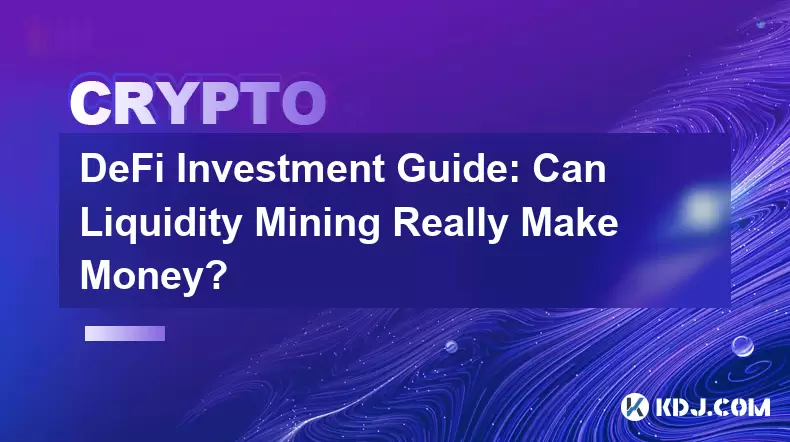
DeFi Investment Guide: Can Liquidity Mining Really Make Money?
May 28,2025 at 10:18am
Introduction to Liquidity Mining in DeFiLiquidity mining has emerged as a popular method for earning passive income within the decentralized finance (DeFi) space. This process involves users providing liquidity to decentralized exchanges or lending platforms in exchange for rewards, often in the form of the platform's native tokens. But the question on ...

What is the difference between DeFi and CeFi? An article analyzing the advantages and disadvantages of both
Jun 13,2025 at 03:57am
Understanding the Foundations of DeFi and CeFiTo fully grasp the difference between DeFi (Decentralized Finance) and CeFi (Centralized Finance), it’s essential to understand their foundational structures. DeFi operates on blockchain technology, primarily using smart contracts to execute financial services without intermediaries. In contrast, CeFi platfo...

What is DeFi? How to balance risks and returns?
May 31,2025 at 12:22pm
What is DeFi? How to Balance Risks and Returns? Decentralized Finance, commonly known as DeFi, represents a revolutionary shift in the financial ecosystem, leveraging blockchain technology to create an open, permissionless, and transparent financial service network. Unlike traditional finance, which relies on centralized institutions like banks, DeFi op...

How does DeFi lending work? What is the difference from traditional bank loans?
May 29,2025 at 05:36pm
Introduction to DeFi LendingDeFi lending, or decentralized finance lending, represents a revolutionary shift in the way borrowing and lending are conducted. Unlike traditional bank loans, DeFi lending operates on blockchain technology, offering a decentralized, transparent, and often more accessible approach to finance. This article will explore the mec...

Is DeFi safe? The opportunities and challenges of decentralized finance
May 27,2025 at 02:28pm
Decentralized Finance, commonly known as DeFi, has revolutionized the financial landscape by offering a range of financial services without the need for traditional intermediaries like banks. As with any innovative technology, the question of safety is paramount. This article delves into the opportunities and challenges that come with DeFi, providing a ...

DeFi Mining Tutorial: How to Maximize Profits and Reduce Risks?
May 27,2025 at 07:42am
DeFi, or Decentralized Finance, has opened up a new world of opportunities for crypto enthusiasts looking to maximize their profits through various mining strategies. However, with great potential comes significant risk. This tutorial aims to guide you through the process of engaging in DeFi mining while focusing on maximizing profits and reducing risks...

DeFi Investment Guide: Can Liquidity Mining Really Make Money?
May 28,2025 at 10:18am
Introduction to Liquidity Mining in DeFiLiquidity mining has emerged as a popular method for earning passive income within the decentralized finance (DeFi) space. This process involves users providing liquidity to decentralized exchanges or lending platforms in exchange for rewards, often in the form of the platform's native tokens. But the question on ...
See all articles























